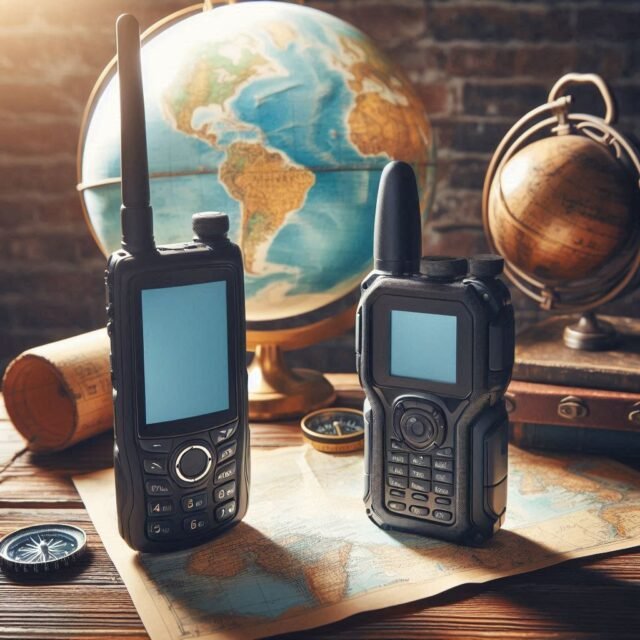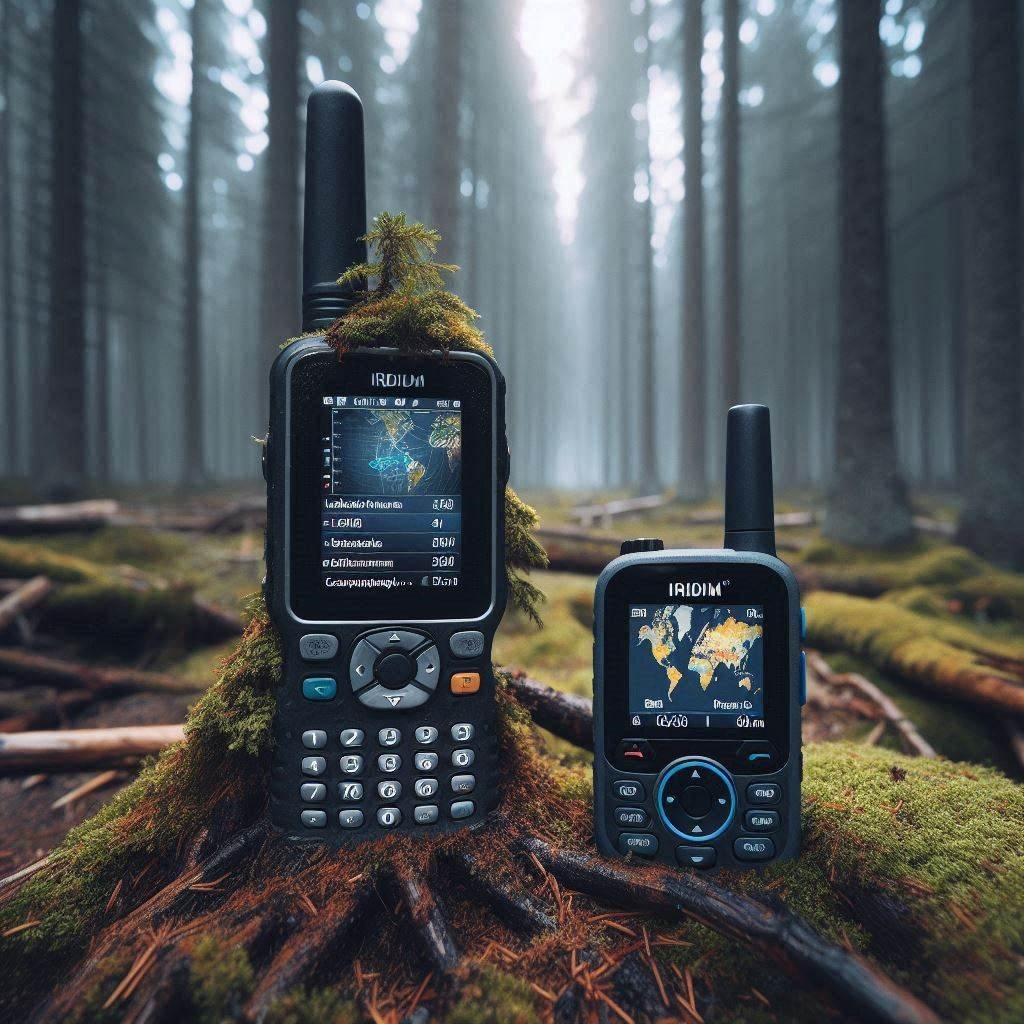Table of Contents
The Ultimate Guide to Satellite Phones vs. Satellite Messengers: Choosing the Right Communication Tool for Your Adventure
In an ever increasingly smartphone filled modern world, there are still places where traditional cellular networks don’t reach.
Whether you’re planning an expedition to remote wilderness areas, a yetihunt, embarking on a maritime adventure, or preparing for emergency situations, reliable communication can be a matter of safety and convenience.
This updated guide will explore two popular options for staying connected in off-grid locations: sat phone and satellite messenger.
We’ll compare their features, pros and cons, and help you decide which device is best suited for your needs.

Understanding Satellite Phones
Satellite phones, often called “satphones,” are mobile devices that connect directly to satellites orbiting the Earth, allowing users to make voice calls and send text messages from virtually anywhere on the planet.
Pros of Satellite Phones:
– Global coverage (with some exceptions)
– Voice call capability
– Two-way text messaging
– Some models offer limited data connectivity
– More versatile communication options
Cons of Satellite Phones:
– Generally more expensive than satellite messengers
– Larger and bulkier than most satellite messengers
– Shorter battery life compared to satellite messengers
– Often require a clear view of the sky for optimal performance
– Higher learning curve for operation
Understanding the Satellite Messenger
Satellite messengers are compact devices primarily designed for sending short text messages and GPS coordinates via satellite networks.
They are popular among hikers, backpackers, us at OTL and many outdoor enthusiasts for their simplicity and reliability.
Pros of Satellite Messengers:
– More affordable than satellite phones
– Compact and lightweight
– Longer battery life
– Simple to use
– Many offer SOS emergency functions
– Some models allow for basic two-way messaging
Cons of Satellite Messengers:
– Limited to text-based communication
– No voice call capability
– May have more limited global coverage compared to some satellite phones
– Often tied to specific subscription plans
– Limited data capabilities
Comparing Key Features
a) Communication Capabilities:
– Satellite Phones: Voice calls, text messaging, limited data
– Satellite Messengers: Text messaging, GPS tracking, SOS alerts
b) Size and Portability:
– Satellite Phones: Generally larger and heavier
– Satellite Messengers: Compact and lightweight
c) Battery Life:
– Satellite Phones: Typically 4-8 hours of talk time, several days on standby
– Satellite Messengers: Often 100+ hours of use, some lasting weeks on a single charge
d) Ease of Use:
– Satellite Phones: More complex interface, similar to older cell phones
– Satellite Messengers: Simple, intuitive interfaces with limited buttons
e) Coverage:
– Satellite Phones: Near-global coverage with some providers (Inmarsat & Iridium)
– Satellite Messengers: Extensive coverage, but may vary by provider
f) Cost:
– Satellite Phones: Higher upfront cost and potentially higher usage fees
– Satellite Messengers: Lower initial cost and often more affordable plans

Who Should Choose a Satellite Phone?
Satellite phones are ideal for:
– Professional expeditions requiring voice communication and voice calling ability
– Maritime use where radio communication is essential
– Remote work situations needing more robust communication options
– Emergency preparedness in areas prone to natural disasters
– Travelers visiting multiple countries who need flexible communication
Who Should Choose a Satellite Messenger?
Satellite messengers are best for:
– Hikers and backpackers prioritizing weight and simplicity
– Outdoor enthusiasts needing basic emergency communication
– Those on a tighter budget but still wanting off-grid satellite connectivity
– Users who primarily need GPS tracking and simple messaging capabilities
– Individuals comfortable with text-based communication
Top Amazon Picks for Satellite Phones and Messengers Today
Satellite Phones:
1. Inmarsat IsatPhone 2 Satellite Phone
– Pros: Rugged design, long battery life, global coverage, good value, hot seller
– Cons: Larger size, higher cost
2. Iridium 9575 Extreme Satellite Phone
– Pros: Compact for a satellite phone, reliable Iridium network, durable, considered the Best by many
– Cons: Can be expensive, shorter battery life than some competitors
3. Thuraya XT-Pro Satellite Phone
– Pros: Longest talk-time on any satellite phone- With a talk-time of up to 9 hours and a standby time of up to 100 hours.
– Cons: Limited coverage area compared to Iridium, Globalstar and Inmarsat. Great for Asia.
Satellite Messengers:
1. Garmin inReach Mini 2
– Pros: Ultra-compact, long battery life, two-way messaging and Garmin name
– Cons: Small screen, limited typing interface
2. ZOLEO Satellite Communicator
– Pros: Seamless transition between cellular and satellite, affordable plans
– Cons: Requires smartphone for full functionality
3. Spot X 2-Way Satellite Messenger
– Pros: Built-in keyboard, affordable plan options
– Cons: Bulkier than some competitors, limited coverage in some areas

Frequently Asked Questions (FAQ)
Q1: Do I need a clear view of the sky to use a satellite phone or messenger?
A: Generally, yes. Both types of devices work best with a clear line of sight to the sky. Dense forest canopy, steep canyons, or indoor locations can interfere with signal quality.
Q2: Can I use a satellite phone or messenger anywhere in the world?
A: While coverage is extensive, it’s not absolutely global. Check the coverage maps for your specific device and service provider. Some areas, like North Korea and some parts of the Middle East, may have restrictions.
Q3: Are satellite phones or messengers waterproof?
A: Many modern satellite devices offer some level of water resistance. However, the degree varies by model. Always check the IP rating of your specific device for water and dust protection levels.
Q4: How much do satellite communication plans cost?
A: Plans vary widely. Satellite phone plans can range from $40 to $150+ per month, while satellite messenger plans often start around $10-$15 per month. Pay-as-you-go options are also available for some services.
Q5: Can I send photos or access the internet with these devices?
A: Some advanced satellite phones offer limited data capabilities for sending small photos or basic web browsing. Most satellite messengers are limited to text and GPS data only.
Q6: Do I need a special license to operate a satellite phone or messenger?
A: In most countries, no special license is required for personal use. However, always check local regulations, especially when traveling internationally.
Q7: How long does the battery last on these devices?
A: Battery life varies significantly. Satellite phones typically offer 4-8 hours of talk time and several days on standby. Satellite messengers can often last 100+ hours of use or several weeks with minimal use.
Q8: Can these devices be used for emergency services?
A: Yes, both satellite phones and messengers can be used to contact emergency services. Many satellite messengers have dedicated SOS buttons that connect to search and rescue services.

Choosing between a satellite phone and a satellite messenger depends on your specific needs, budget, and intended use.
Satellite phones offer more comprehensive communication options but come with higher costs and complexity.
Satellite messengers provide a simpler, more affordable solution for basic communication and emergency signaling.
Consider factors such as the nature of your activities, the areas you’ll be traveling in, your budget, and how critical voice communication is for your needs.
Whichever option you choose, having a reliable means of communication in remote areas can provide peace of mind and potentially life-saving capabilities.
Resources:
1. National Oceanic and Atmospheric Administration (NOAA) – Two-way Satellite Communications:
https://www.weather.gov/
2. U.S. Forest Service – Satellite Emergency Notification Devices:
https://www.fs.usda.gov/
3. NASA – Tracking and Data Relay Satellite System:
https://www.nasa.gov/
Remember, regardless of which satcom device you choose, always familiarize yourself with its operation before heading into remote areas.
Practice using your sat phone in various conditions, keep it charged, and ensure your subscription is active.
With the right preparation and equipment, you can stay connected and safe, even in the most isolated corners of the world.

Introducing JC – The Outdoor Gear Enthusiast and Tester behind Outdoor Tech Lab:
Dive into the exciting world of outdoor gear technology with JC, the founder and driving force behind Outdoor Tech Lab.
With a passion for backpacking, nature and a knack for outdoor gadgets, JC has embarked on a mission to help others explore the outdoors in smarter, safer, and more enjoyable ways.
Join us on the adventure as we explore the ever-evolving landscape of outdoor gear & technology.
Through insightful reviews, practical tips, testing and engaging stories, Outdoor Tech Lab is your one-stop shop for navigating the wild world of outdoor gadgets and gear in 2025 and beyond.




Leave a Reply